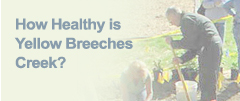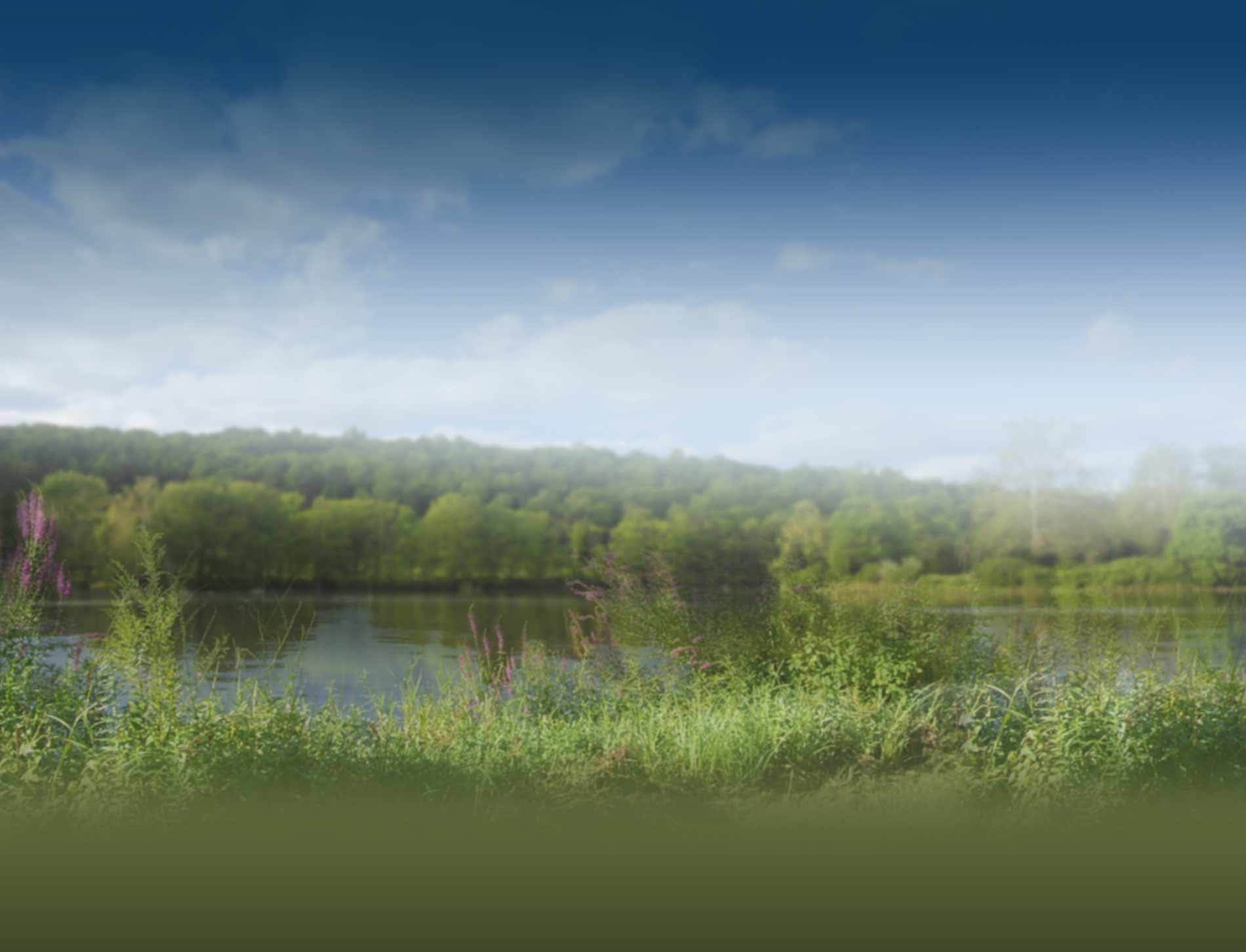
Yellow Breeches Creek | How Healthy is Yellow Breeches Creek?
Although the entire Breeches waterway is a high quality stream, and is a famous trout stream in parts, many other sections of the Yellow Breeches are impaired for one or more pollutants.
Some of the pollutants affecting the Yellow Breeches are those found coming from pipes of industries or sewage treatment plants. The federal and state governments regulate those pollutants that are easily traced by pipe—called point source-pollution—by limiting by permit how much of a particular substance can be discharged into a waterway.
Non-point source pollution doesn’t come from one source. Examples are run off from farms and urban areas when it rains. Pollution washed off of our lawns, parking lots and roads when it rains is a major problem in urban and suburban areas like ours. In a more natural system, like a forest, rain infiltrates through the ground, is used by plants and trees so the volume of water running into rivers and lakes is minimized and the velocity of it traveling is gentled.
Municipalities are trying to slow and clean up the stormwater that flows into the Yellow Breeches. Because stormwater is discharged from the community’s storm sewers are separated from the sanitary sewers they are labeled as a Municipal Separate Storm Sewer Systems or MS4 Community. Because the storm drains are separate from the sanitary sewer system, polluted waters flow directly into the Breeches or its tributaries. Each MS4 is required by state and federal law to manage stormwater through an MS4 stormwater discharge permit.
Municipalities in the Yellow Breeches Watershed:
Camp Hill, Lemoyne, Mechanicsburg, Mt. Holly Springs, New Cumberland, and Shiremanstown Boroughs; Cooke, Dickinson, Hampden, Lower Allen, Monroe, Penn, Southampton, South Middletown, and Upper Allen Townships.
Watershed Facts
Unique Feature
The Yellow Breeches is designated as a High-Quality Cold Water Fishery. In 1992, it also was designated as a Scenic River by the Commonwealth of Pennsylvania. While Pennsylvania has over 83,000 miles of streams, only 25% are considered high-quality coldwater fisheries. Of that, less than 2% are designated as highly productive waters that contain naturally reproducing wild trout. With its high-quality fishery, there’s no surprise that the Yellow Breeches is a popular spot for fly fishers from all over the world, many of whom frequent the mile-long catch-and-release spot near Boiling Springs.
Drinking Water
Water from the Yellow Breeches, as well as from nearby Conodoguinet Creek, flows through the homes of 180,000 PA American Company customers. United Water Company supplies drinking water to an additional 27,000 customers from the Yellow Breeches sources.



